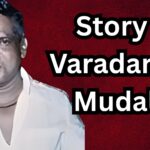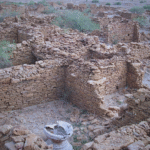Imagine sipping tea on your balcony in a peaceful Mumbai neighborhood when suddenly, gunshots erupt. Not one, no longer; however, a war zone outside your window. On November 16, 1991, that inconceivable chaos became terrifyingly actual for the residents of Lokhandwala Complex, Andheri.
It wasn’t a terrorist assault. It wasn’t a rebellion.
It changed into a police operation—a brutal, blinding showdown among some of Mumbai’s maximum dangerous gangsters and the city’s freshly formed Anti-Terrorism Squad (ATS).
This wasn’t just another encounter with a crook. It became a second that ripped apart the phantasm of law and order, revealing the uncooked, messy underbelly of a city in transition. Welcome to the unforgettable Lokhandwala Shootout.
The Crime Meets the Cops: What Sparked It All?
By the early ’90s, Mumbai (then Bombay) turned into teetering underneath the pressure of its unexpectedly growing underworld. With crime bosses like Dawood Ibrahim increasing their empire and creating mini kingdoms in neighborhoods like Dongri, Kurla, and Ghatkopar, the city became a boiling pot.
In this risky mix entered Maya Dolas—a pointy-tongued, rapid-rising gangster with one intention: energy. Maya was ambitious, ruthless, and refused to play second fiddle. Even though he was working under Dawood, he had a reputation for going rogue.
Word reached the ATS that Maya and his close aides, including Dilip Buwa, were holed up in a swanky flat in the Swati Building of Lokhandwala Complex, allegedly plotting a high-profile killing.
ATS Chief A. A. Khan didn’t blink.
He rolled in with 100 well-armed officers, surrounded the building, and opened fire. What followed wasn’t a few warning shots—it was over 450 rounds of gunfire, turning the upscale Lokhandwala into a literal battlefield.
Meet the Man Behind the Trigger: A. A. Khan
Afzal Khan, the officer leading the operation, wasn’t your average police officer. Known for his uprightness and daredevilry, Khan had a mission—to clean Mumbai’s streets of organized crime, no matter the cost.
For Khan, the Lokhandwala operation wasn’t just tactical—it was personal. He believed that if he didn’t act then, the underworld would grow untouchable.
Khan’s logic was simple: “You can’t negotiate with men who thrive on fear. You have to be louder than their guns.”
Real Encounter or Scripted Drama?
While many applauded the ATS for its bold stance, others asked uncomfortable questions:
- Why didn’t the police try to arrest the gangsters quietly?
- Why were the media present before the operation even ended?
- Why did all six suspects die? Why no survivors?
The National Human Rights Commission even initiated an inquiry into the possibility of the encounter being staged. Families of the gangsters claimed that the police executed them without due process.
The police, on the other hand, defended themselves fiercely:
“When bullets are flying at you from an AK-47, you don’t ask the attacker for surrender papers.”
Media Frenzy: When Cameras Rolled with the Bullets
One of the maximum surreal elements of the Lokhandwala shootout was the presence of journalists and camera crews. The media had been tipped off. As bullets flew, reporters filmed.
It was the first time India witnessed live action footage of a police encounter. Homes across the country were glued to their TVs, watching real gangsters get gunned down in real time.
What was supposed to be a police operation became primetime spectacle.
Critics called it “encounter tourism.”
Supporters said it was “transparency in action.”
Maya Dolas: The Gangster Who Wanted to Be a Star
Born into a lower-middle-class Maharashtrian family, Maya Dolas wasn’t born a gangster. He became one. Driven by street smarts and an appetite for power, Maya quickly rose through the ranks, forming his own crew and attracting Dawood’s attention.
But Maya didn’t believe in laying low. He flaunted guns, cars, and control. He wasn’t just dangerous—he was loud. And in the world of crime, visibility is vulnerability.
Dawood himself reportedly approved of the hit that would eventually take Maya down. A gangster too ambitious even for his boss? That’s saying something.
Lokhandwala Changed the Game
The Lokhandwala shootout didn’t simply put off six gangsters—it ushered in a new generation of policing:
- Encounter Specialists: Cops like Daya Nayak, Vijay Salaskar, and Pradeep Sharma emerged as vigilante heroes. Police bullets now did what the courts couldn’t—deliver instant justice.
- Bollywood Influence: Crime and justice have become cinematic subject matters. The 2007 film Shootout at Lokhandwala glamorized the event, immortalizing Maya Dolas (played with the aid of Vivek Oberoi) and A. A. Khan (portrayed by Sanjay Dutt).
- Fear vs Faith: Citizens were divided. Some felt safe knowing the police had power. Others feared they would be subsequent if caught within the incorrect region at the wrong time.
Voices from the Ground: The People of Lokhandwala
For those living in the Lokhandwala Complex, it wasn’t an action movie. It was a living nightmare.
One resident recounted:
“I was feeding my baby when the windows shattered. We didn’t realize if it became warfare, riots, or something worse.”
Another shared:
“We thought it would last a few minutes. But four hours of non-stop firing—it felt like the apocalypse.”
To this present day, a few locals refuse to talk publicly about what they noticed.
Did Justice Win That Day?
This is the question that lingers. Did the police uphold justice—or bypass it?
Yes, gangsters died.
Yes, crime dipped (temporarily).
But also, due process was questioned.
The debate rages even today—what is more dangerous? A gangster with a gun or a system without accountability?
Lessons from Lokhandwala
The shootout wasn’t just about putting off threats. It turned into an image of authority, a public message to Mumbai’s underworld that the streets belonged to the law.
But it also raised powerful questions:
- Is extrajudicial justice ever justified?
- Should the police be feared or respected?
- Where do we draw the line between heroism and hubris?
Final Reflections: The Encounter That Still Echoes
The Lokhandwala shootout remains one of the maximum substantial, arguable, and dramatic activities in India’s crime history. It wasn’t pretty much bullets and gangsters—it turned into about Mumbai going through its inner demons.
Decades later, the streets are quieter. The names have changed. But the shadows of that afternoon still lurk in Mumbai’s memory.
Some see it as a day when justice stood tall.
Others see it as the moment justice took a shortcut.



